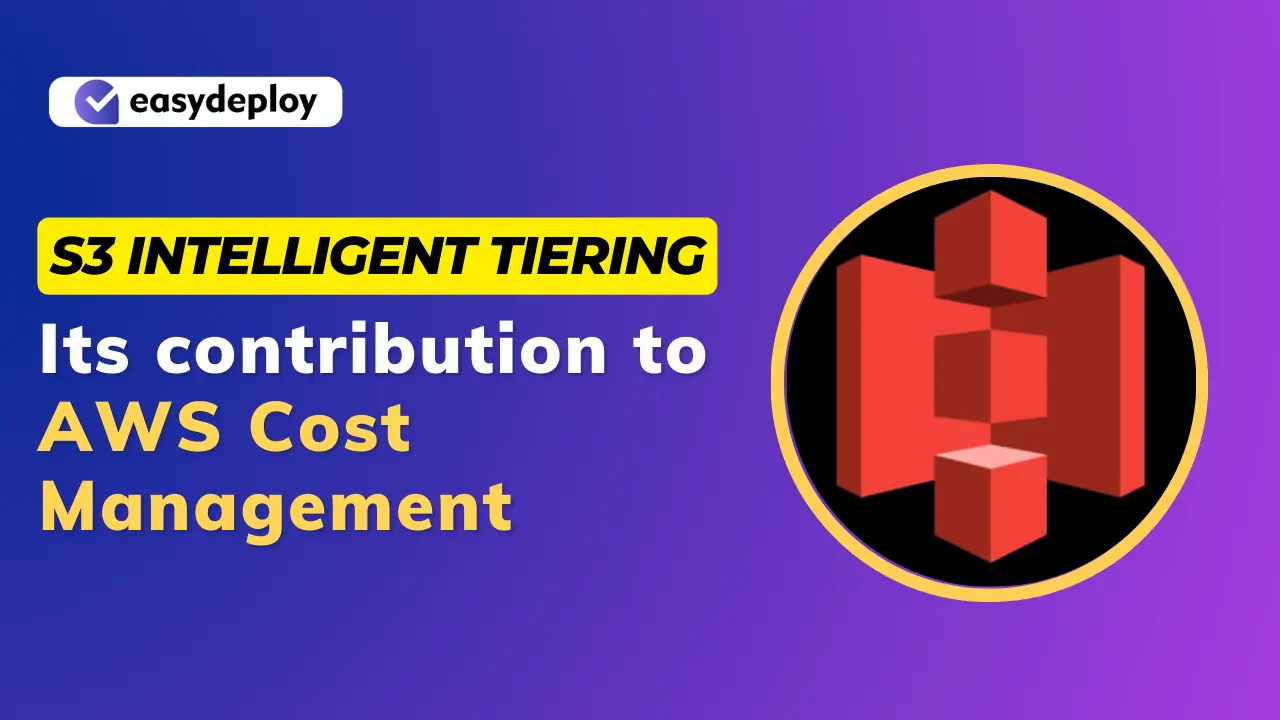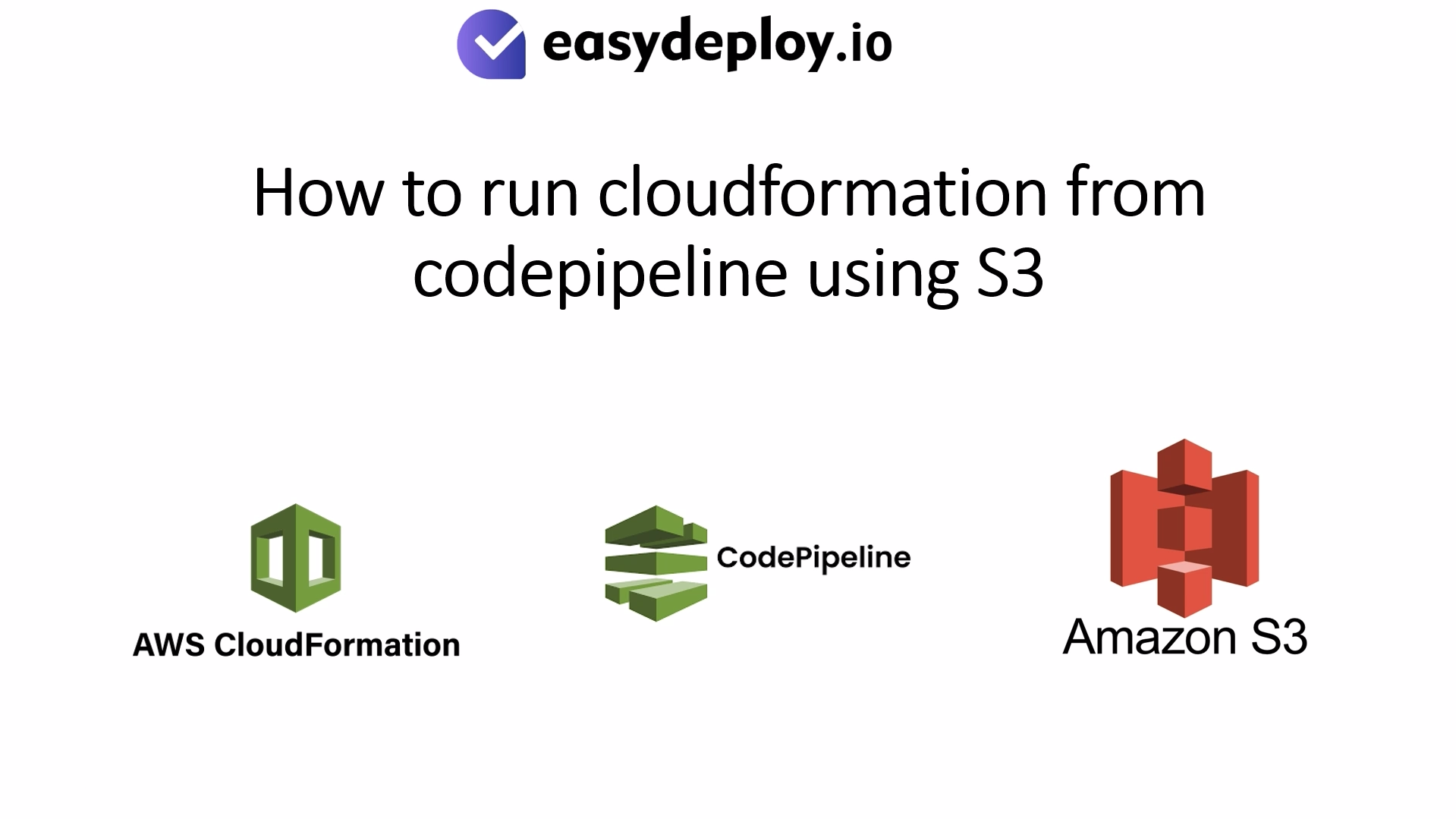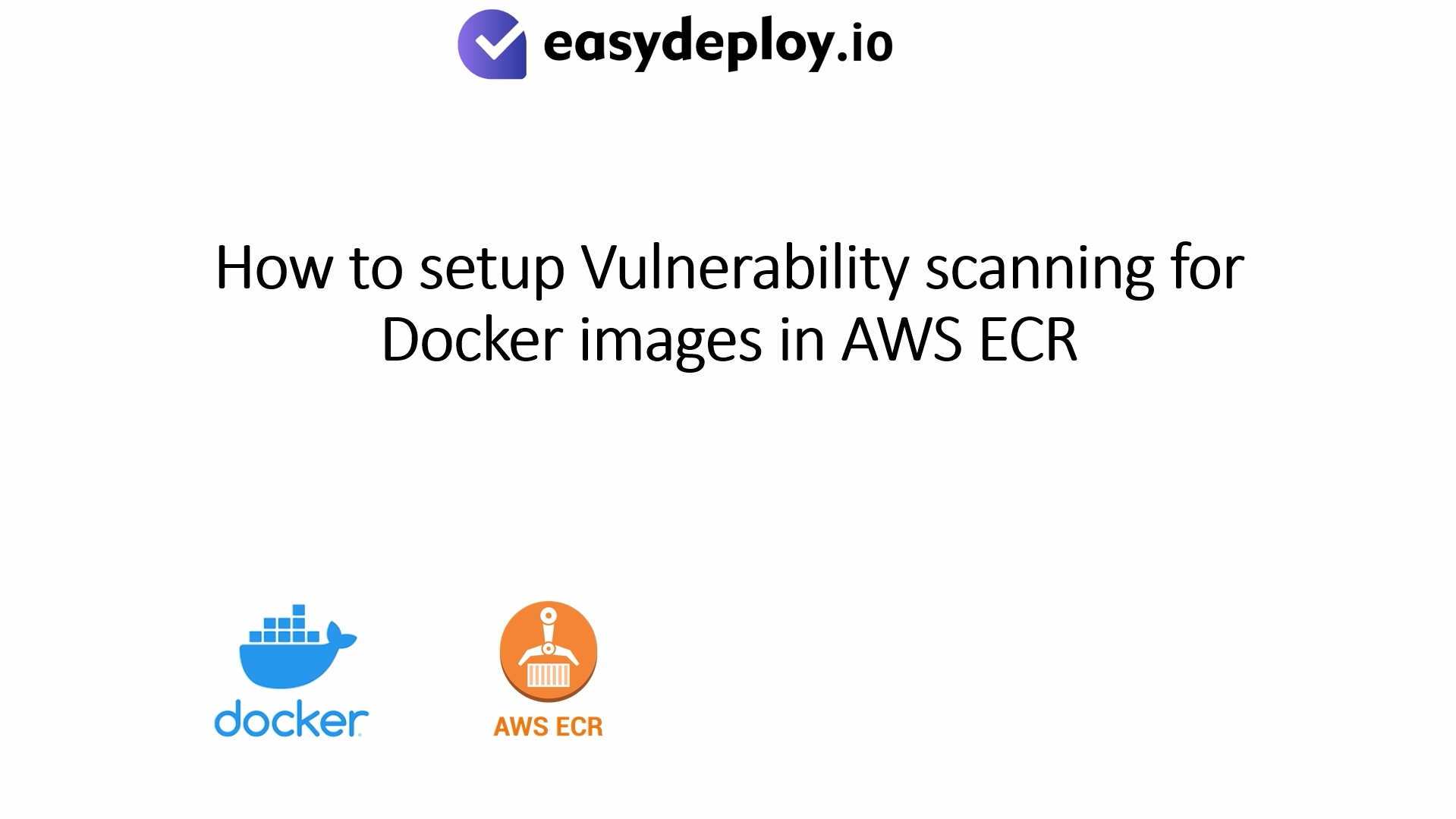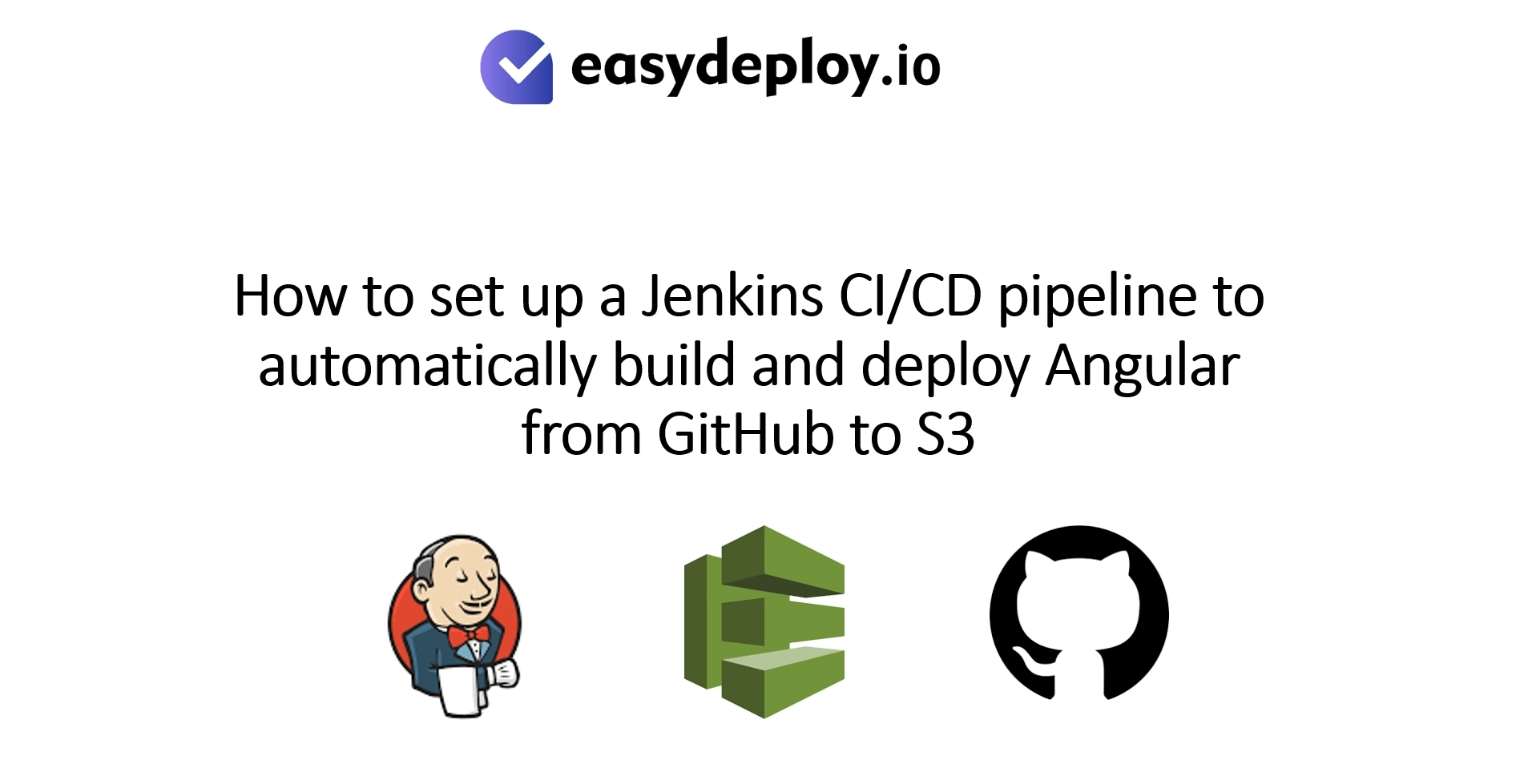S3 Intelligent Tiering is a popular and reliable AWS storage service. But it has become more complex, causing some people to get unexpectedly high bills because they didn’t use it efficiently or understand the costs.
This is typical of AWS Service. They offer powerful services for businesses but often don’t give clear instructions on how to use them best or how they fit together. This can lead to confusion, especially about costs. IT teams often have to figure things out on their own, and S3 is no exception.
Luckily, AWS S3 came up with a life-saving feature called Intelligent Tiering. By using it, your organization can save money without sacrificing performance. It’s like a simple switch that can make a big difference in your AWS budget.
In this blog post, we will look at the fundamentals of S3 Intelligent-Tiering: what it includes, its benefits, and features, how it functions, and when it’s appropriate or inappropriate to employ it.
Let’s dig in!
What is AWS S3 Intelligent Tiering?
Before we dive into what S3 intelligent tiering is, let’s take a moment to understand the context of AWS S3 storage classes and why this intelligent tiering can be valuable.
AWS S3 stands as a storage service offered by Amazon Web Services (AWS), designed for various storage requirements. It serves a wide range of purposes, from storing server backups and delivering static files for websites to maintaining long-term archives to meet compliance requirements.
Within S3, there are several storage classes, each offering distinct levels of availability and reliability. These classes come with different pricing models and assurances regarding how quickly you can retrieve your data.
AWS S3 Intelligent-Tiering, a cloud-based cost-effective storage class employed for delivery of storage cost savings in an automated manner, whenever the data accessing patterns get changed without affecting the performance.
When access patterns alter, data is automatically transferred to the most economical access tier via the AWS S3 Intelligent-Tiering collection class to reduce storage costs.
S3 Intelligent-Tiering watches access patterns and automatically moves items that haven’t been accessed to less expensive access tiers for a nominal monthly object monitoring and automation fee. Customers have saved $1 billion from the introduction of S3 Intelligent Tiering in 2018 by switching from S3 Standard to S3 Intelligent Tiering.
S3 Intelligent-Tiering Features
Users have multiple ways to utilize S3 Intelligent-Tiering, including the AWS Management Console, command line interface, or S3 API. They have the flexibility to choose this storage class when uploading data to S3 or migrate existing data from another class into it. Additionally, users can establish lifecycle rules to transition data to a different storage class, like AWS S3 Glacier, based on predefined timeframes.
This service employs machine learning algorithms developed by AWS to monitor and predict user behavior, enabling it to make informed decisions about the most appropriate data storage tier. These predictions are generated by analyzing data traffic patterns among the vast number of objects stored in S3.
While S3 Intelligent Tiering is a valuable option designed to meet accessibility requirements, it may not be the best fit for users who possess a deep understanding of their data access patterns.
Also Read: AWS S3 Cost Optimization: 7 Tips to optimize your AWS Cost (easydeploy.io)
How Does AWS S3 Intelligent-Tiering Work?
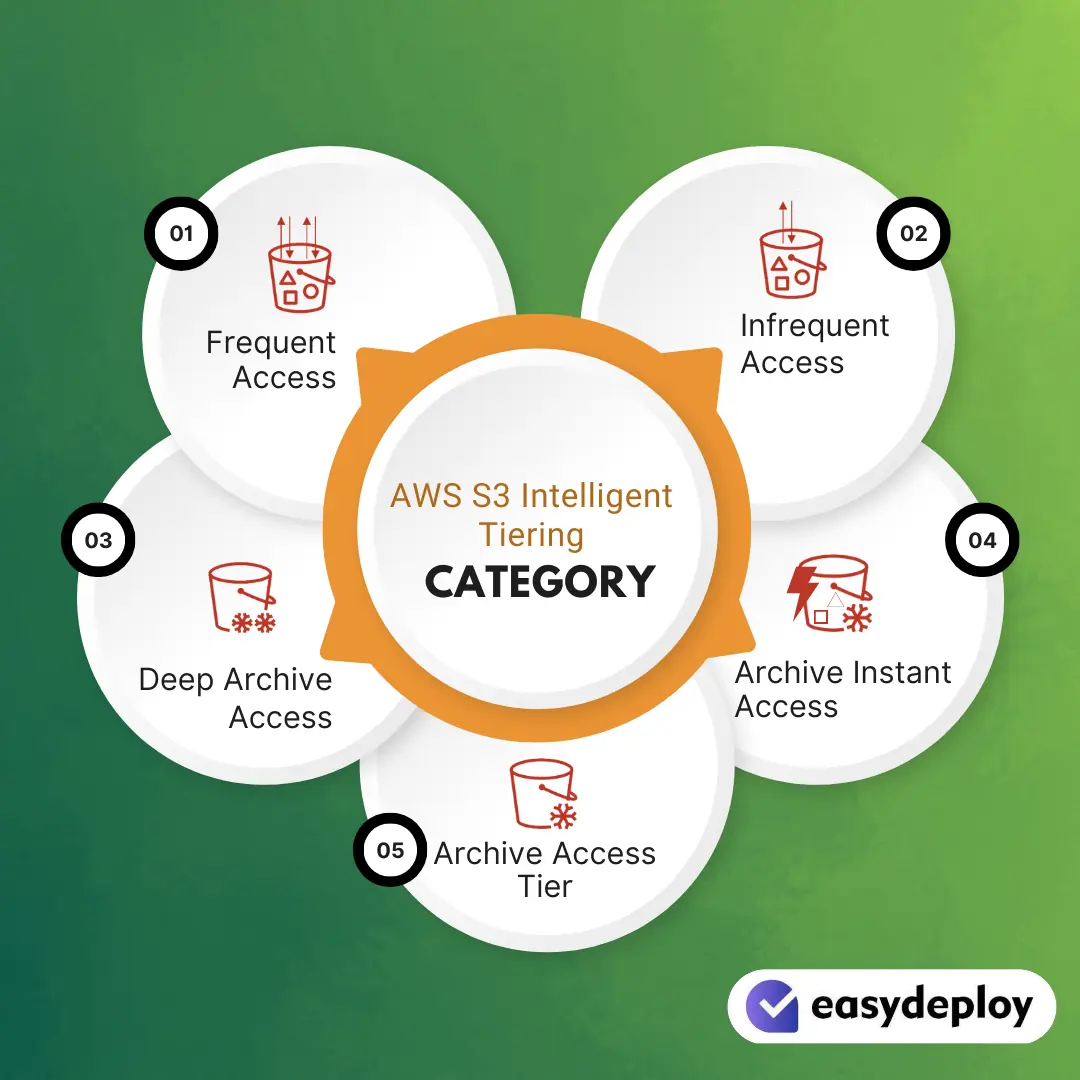
This intelligent tiering identifies the data that are not accessed over a certain period through continuous monitoring and automation and that data will be migrated to lower cost storage class. The data can be migrated to the specified tier on the basis of how many days have passed since you have accessed it.
Based upon the data accessing frequency, the AWS S3 Intelligent Tiering is categorized into five and they are:
| Storage Tier | Criteria for Data Movement | Access Time | Latency | Throughput Rate | Cost per GB |
|---|---|---|---|---|---|
| Frequent Access | Default for new or transitioned data | Milliseconds | Low | High | - |
| Infrequent Access | No activity for 30 consecutive days | Milliseconds | Low | High | - |
| Archive Instant Access | No access for 90 consecutive days | Milliseconds | Low | High | $0.0040/GB |
| Archive Access | Optional, for data not accessed in 90 days or more | Milliseconds | Low | High | $0.0036/GB |
| Deep Archive Access | Data not accessed for 180 consecutive days | 3-12 hours | Low | High | $0.00099/GB |
S3 Intelligent-Tiering Pricing
In common, the user needs to pay for storage, data transfer and requests every month. But with intelligent tiering, you can be able to pay a small per-object fee every month for the automation and monitoring activity, which basically costs up to $0.0025 per 1000 objects which can be calculated using the AWS pricing calculator.
Moreover, there are no retrieval fees in the S3 Intelligent Tiering and migrating the data between tiers. Here is some data for you on how billing occurs on the tiers:
- Objects existing in the frequent access tier have been billed at the same rate as the S3 Standard
- Objects retained in the infrequent access tier get billed at the same rate as like S3 Standard infrequent access
- Objects in the archive instant access tier get billed at the same rate as the S3 intelligent-tiering retrieval time
- Objects kept in the Archive Access tier incur charges at a rate equivalent to S3 Glacier Flexible Retrieval (formerly known as S3 Glacier), while objects stored in the Deep Archive Access tier are subject to charges at the same rate as S3 Glacier Deep Archive.
Benefits Intelligent-Tiering
In general, AWS Customers can utilize the lifecycle policies in various ways but they are just used in a basic way.
- Lifecycle policies can be applied to all the files that are present in the S3 folder but the accessing patterns get varied for the objects. You can access some files frequently while some can be rarely used and accessed. But it can lead to additional storage costs.
- Enabling AWS to autonomously determine the most suitable storage tiers for individual objects not only leads to cost savings but also streamlines time management. There’s no need for customers to make initial decisions about which storage class is optimal for specific files.
- Both the Frequent and Infrequent Access tiers offer the same exceptional attributes as the S3 Standard tier, including low latency and high throughput performance, resulting in potential savings of up to 40% on storage expenses.
- The design of S3 Intelligent-Tiering prioritizes object durability, ensuring an extraordinary level of 99.999999999% durability across multiple Availability Zones, coupled with 99.9% availability over a year.
- The service boasts unique advantages, such as the absence of operational complexities, retrieval charges, and any obligatory minimum storage duration.
When to use S3 Intelligent Tiering for AWS Cost Management?
The S3 Intelligent-Tiering storage class is a great choice if you’re dealing with data that has unpredictable usage patterns or if you’re storing objects whose access frequency can change or is unknown.
However, while you can use S3 Intelligent-Tiering as the default storage class for most of your workloads, it’s particularly well-suited for:
- New applications with uncertain data access patterns: When you’re launching a new application and you’re not sure how often its data will be accessed, S3 Intelligent Tiering can be a smart choice.
- Data analytics scenarios with unpredictable access patterns: If your data analytics processes involve objects that have varying and unpredictable access frequencies, this storage class can adapt effectively.
- Data lakes: S3 Intelligent-Tiering is well-suited for data lakes where you need cost-effective, long-term storage with the ability to retrieve data within 5-12 hours.
- User-generated content: For content like photos and videos generated by users, it’s often hard to predict which objects will be frequently accessed and which won’t. S3 Intelligent-Tiering can handle this variability efficiently.
How to enable S3 Intelligent Tiering for AWS Cost Management?
There are several methods to enable S3 Intelligent-Tiering for data within your S3 bucket, whether it’s for existing files or newly uploaded data.
Enabling S3 Intelligent Tiering for Folders and Files
To assign or update object storage classes, you have multiple options, including using the AWS S3 console, AWS SDKs, or the AWS Command Line Interface (AWS CLI). For detailed guidance, refer to the official AWS documentation on how to set the storage class of an object.
Enabling S3 Intelligent Tiering with Lifecycle Rules
You can incorporate rules into your S3 Lifecycle configuration to instruct Amazon S3 to move objects from their current storage class to S3 Intelligent Tiering. Detailed instructions can be found in the official AWS documentation on setting up a lifecycle configuration for a bucket.
Advanced Methods for Utilizing Intelligent Tiering
For more advanced configurations, you can make S3 Intelligent Tiering the default storage class for newly created data. Additionally, you have the option to activate one or both of the archive access tiers using the API through PutBucketIntelligentTieringConfiguration, the CLI, or the AWS S3 console. For comprehensive information, explore the details in the documentation on using S3 Intelligent Tiering.
When S3 Intelligent Tiering is not suitable?
S3 Intelligent Tiering can lead to substantial cost savings on your AWS bill, provided it aligns with your specific use cases. However, it may not be the ideal choice in every scenario. Here are a few situations where S3 Intelligent Tiering might not be the most suitable option:
- Predictable Access Patterns: If your objects exhibit highly predictable access patterns, you could manage them effectively using object lifecycle rules, eliminating the need for AWS S3 Intelligent Tiering. This approach would also help you avoid the monitoring charge of $0.0025 per 1,000 objects.
- Very Small Objects: Objects smaller than 128KB will always remain in the frequent access tier and won’t benefit from transitioning to the infrequent access tier, making S3 Intelligent-Tiering less advantageous for such content.
- Short-Lived Objects: S3 Intelligent-Tiering comes with a minimum storage duration charge of 30 days. If your objects are expected to be deleted before this period, it’s more appropriate to opt for a different storage class.
Conclusion
Hope this article explores the S3 Intelligent Tiering and how it helps to efficiently manage your objects by automatically placing them in either frequent access or infrequent access storage tiers, depending on how often they are accessed.
We discussed the benefits of using S3 Intelligent Tiering and delved into its pricing structure. Additionally, we examined scenarios where Intelligent Tiering might not be the most suitable choice for your needs.
If you need any help with cost planning or data usage monitoring, you can go for EasyDeploy. We extend our assistance to larger firms who need constant monitoring of the cloud environment.
If you need any cloud services, contact us today!
FAQ
- What is an AWS pricing calculator?
The AWS Pricing Calculator is a free online tool for estimating costs associated with AWS services. It’s handy for modeling solutions before implementation.
2. What is AWS cost management and billing?
AWS Billing and Cost Management offers a range of tools to assist in configuring billing settings, managing invoices, and analyzing, organizing, planning, and optimizing costs.

